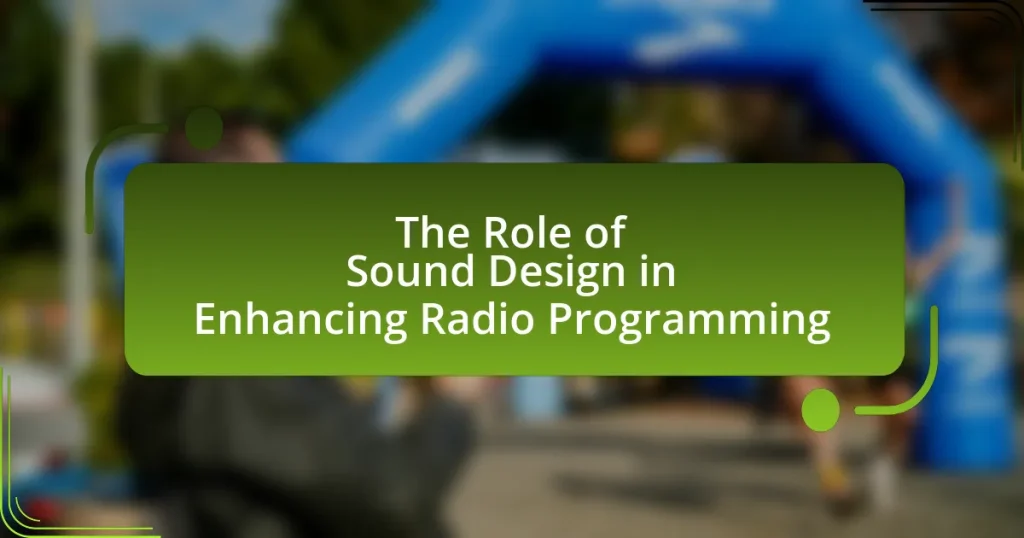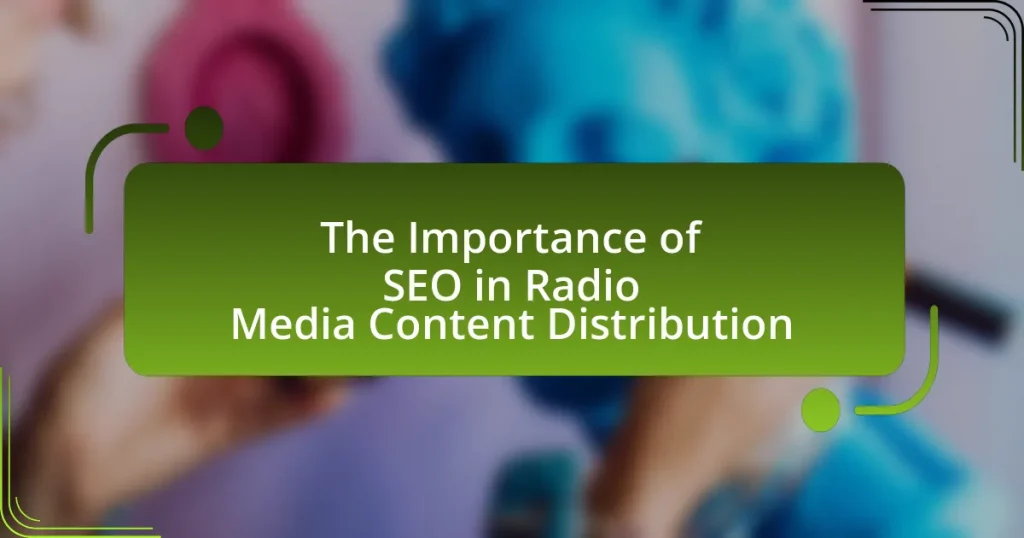The article examines the impact of live streaming on radio content creation, highlighting how it enhances audience engagement and expands reach. It contrasts traditional radio with live streaming, emphasizing the immediacy and interactivity that live platforms provide. Key challenges faced by radio creators, such as technical issues and monetization, are discussed alongside strategies for effective audience interaction and content promotion. The article also outlines best practices for integrating live streaming into radio programming, including the importance of high-quality audio and video, and the role of audience feedback in shaping future content.
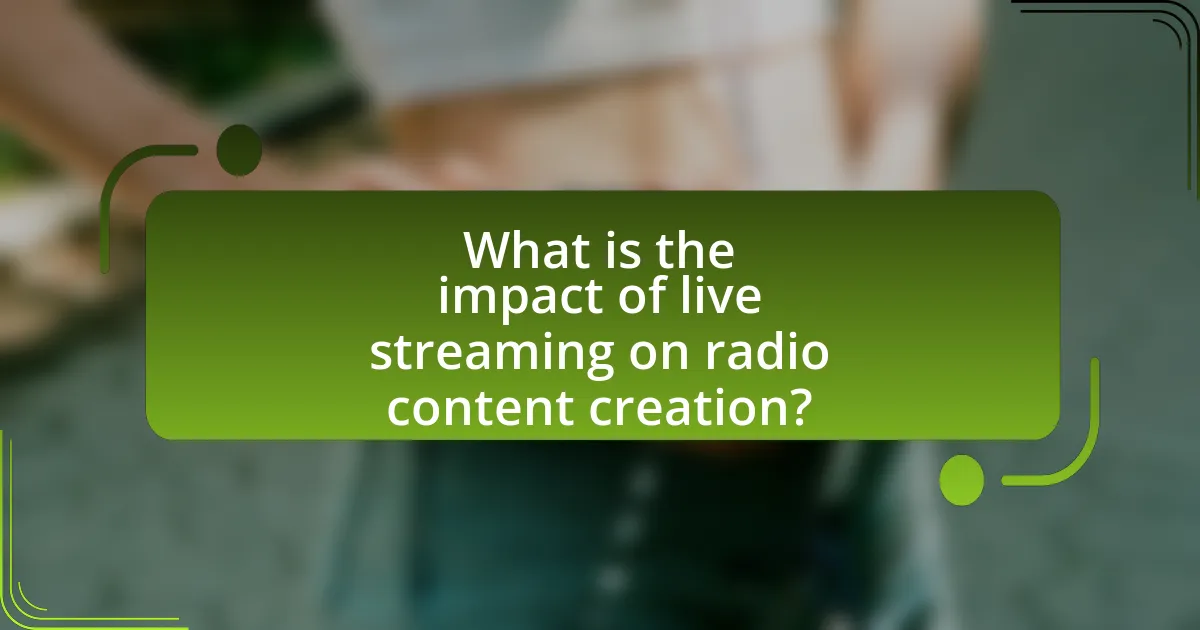
What is the impact of live streaming on radio content creation?
Live streaming significantly enhances radio content creation by allowing real-time audience interaction and expanding reach. This immediacy fosters a more engaging listener experience, as audiences can participate through comments and social media, creating a sense of community. According to a 2021 report by Edison Research, 60% of listeners prefer live content for its spontaneity and connection to current events, demonstrating that live streaming meets audience demand for immediacy and relevance. Additionally, platforms like Twitch and YouTube have shown that integrating live streaming with traditional radio can attract younger demographics, thereby revitalizing the medium.
How has live streaming changed the landscape of radio broadcasting?
Live streaming has transformed radio broadcasting by enabling real-time interaction between broadcasters and audiences, thereby enhancing listener engagement. Traditional radio relied on scheduled programming and limited audience feedback, while live streaming allows for immediate responses through chat features and social media integration, fostering a more dynamic relationship. According to a 2021 report by Edison Research, 41% of Americans aged 12 and older listen to online radio weekly, highlighting the shift towards digital platforms. This evolution has led to increased accessibility, as listeners can tune in from anywhere, and has encouraged radio stations to adopt multimedia approaches, integrating video and social media to reach broader audiences.
What are the key differences between traditional radio and live streaming?
Traditional radio broadcasts content through AM or FM frequencies, while live streaming delivers audio over the internet. Traditional radio is limited by geographic reach and requires a physical radio receiver, whereas live streaming can be accessed globally via various devices, including smartphones and computers. Additionally, traditional radio often follows a fixed schedule, while live streaming allows for on-demand access and interactive features, such as real-time audience engagement. These differences highlight the evolving landscape of audio content consumption, with live streaming providing greater flexibility and accessibility compared to traditional radio.
How does live streaming enhance audience engagement in radio?
Live streaming enhances audience engagement in radio by allowing real-time interaction between hosts and listeners. This immediacy fosters a sense of community, as audiences can participate through live chats, social media, and call-ins, creating a more immersive experience. According to a study by the Pew Research Center, 54% of listeners reported feeling more connected to radio shows that incorporate live streaming features, highlighting the effectiveness of this medium in building listener loyalty and participation.
What challenges do radio creators face with live streaming?
Radio creators face several challenges with live streaming, including technical issues, audience engagement, and monetization difficulties. Technical issues often arise from unreliable internet connections or inadequate streaming equipment, which can disrupt broadcasts and affect audio quality. Audience engagement is another challenge, as creators must find ways to interact with listeners in real-time, which can be difficult without visual cues or in a crowded digital space. Additionally, monetization remains a significant hurdle; many radio creators struggle to generate revenue through live streaming due to competition from free platforms and the need for innovative advertising strategies. These challenges highlight the complexities of adapting traditional radio formats to the live streaming environment.
How do technical issues affect live streaming quality?
Technical issues significantly degrade live streaming quality by causing interruptions, buffering, and reduced resolution. These problems arise from factors such as inadequate bandwidth, server overload, and hardware malfunctions. For instance, a study by Akamai Technologies found that a 2-second delay in video loading can lead to a 50% increase in viewer abandonment rates. Additionally, poor internet connectivity can result in pixelation and audio dropouts, further diminishing the viewer experience. Therefore, addressing technical issues is crucial for maintaining high-quality live streaming.
What are the implications of copyright and licensing in live streaming?
Copyright and licensing in live streaming significantly impact content creators and platforms by determining the legal use of copyrighted material. Live streamers must obtain licenses for music, video, and other copyrighted content to avoid infringement, as unauthorized use can lead to legal penalties, including fines and content removal. For instance, the Digital Millennium Copyright Act (DMCA) in the United States provides a framework for copyright enforcement, allowing copyright holders to issue takedown notices against infringing content. Additionally, platforms like Twitch and YouTube have specific policies requiring streamers to adhere to copyright laws, which can affect monetization and audience reach. Thus, understanding and navigating copyright and licensing is crucial for live streamers to protect their content and ensure compliance with legal standards.
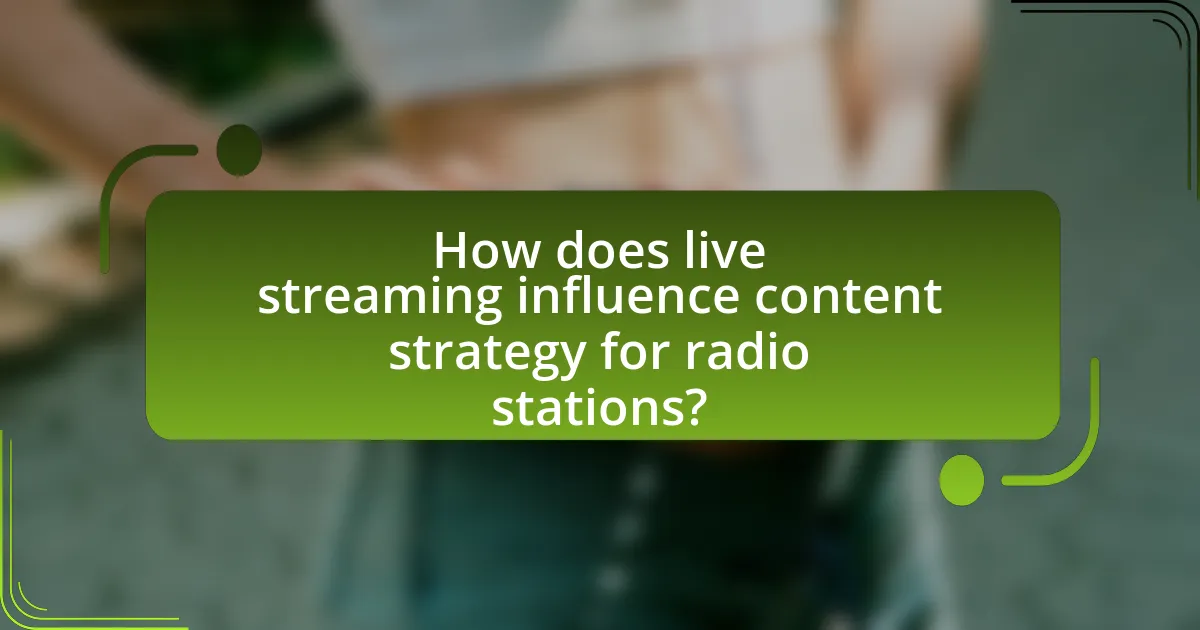
How does live streaming influence content strategy for radio stations?
Live streaming significantly influences content strategy for radio stations by enabling real-time audience engagement and expanding reach beyond traditional broadcasting. This immediacy allows radio stations to create interactive content, such as live listener call-ins and social media integration, which enhances listener participation and loyalty. According to a 2021 report by Edison Research, 41% of Americans aged 12 and older listen to online radio weekly, indicating a shift in listener habits that radio stations must adapt to by incorporating live streaming into their programming. This adaptation not only attracts a broader audience but also allows for the timely delivery of news and events, making content more relevant and engaging.
What types of content are most effective for live streaming in radio?
Interactive content is the most effective type for live streaming in radio. This includes listener call-ins, live Q&A sessions, and social media integration, which actively engage the audience and foster a sense of community. Research indicates that interactive formats can increase listener retention and participation rates, as they allow for real-time feedback and connection between hosts and audiences. For instance, a study by the Pew Research Center found that 64% of listeners prefer radio shows that involve audience interaction, highlighting the effectiveness of this content type in enhancing listener experience and engagement.
How can radio stations leverage live streaming for special events?
Radio stations can leverage live streaming for special events by broadcasting real-time audio and video content to engage a wider audience. This approach allows stations to reach listeners who may not be able to attend events in person, thereby increasing audience participation and interaction. For instance, during events like concerts or interviews, live streaming can facilitate instant feedback through social media platforms, enhancing listener engagement. According to a report by Nielsen, live streaming can increase listener retention by up to 30% during special events, demonstrating its effectiveness in maintaining audience interest.
What role does audience interaction play in live streaming content creation?
Audience interaction is crucial in live streaming content creation as it enhances viewer engagement and fosters a sense of community. This interaction allows content creators to receive real-time feedback, adapt their content based on audience preferences, and create a more personalized experience. For instance, platforms like Twitch report that streams with high audience interaction, such as chat participation and polls, lead to increased viewer retention and satisfaction. This dynamic not only boosts the creator’s visibility but also encourages a loyal audience base, ultimately driving the success of live streaming initiatives.
How can radio stations measure the success of their live streaming efforts?
Radio stations can measure the success of their live streaming efforts through metrics such as listener engagement, audience reach, and retention rates. Listener engagement can be assessed by tracking the number of active listeners during live streams, interactions on social media platforms, and feedback received through surveys or comments. Audience reach is quantifiable through analytics tools that provide data on unique listeners, geographic distribution, and peak listening times. Retention rates indicate how long listeners stay tuned in, which can be analyzed through streaming software that records session durations. These metrics collectively provide a comprehensive view of a station’s performance in live streaming, allowing for data-driven adjustments to enhance content and engagement strategies.
What metrics should be used to evaluate audience engagement during live streams?
To evaluate audience engagement during live streams, key metrics include viewer count, chat activity, average watch time, and audience retention rate. Viewer count indicates the number of participants actively watching the stream, while chat activity reflects real-time interaction and engagement levels. Average watch time measures how long viewers stay engaged, and audience retention rate shows the percentage of viewers who remain throughout the stream. These metrics provide a comprehensive view of audience engagement, allowing content creators to assess the effectiveness of their live streaming efforts.
How can feedback from live streaming inform future content creation?
Feedback from live streaming can significantly inform future content creation by providing real-time audience insights and preferences. This immediate feedback allows content creators to understand what resonates with their audience, enabling them to tailor future broadcasts to align with viewer interests. For instance, metrics such as viewer engagement, comments, and reactions during a live stream can highlight popular topics or formats, guiding creators in refining their content strategy. Research indicates that 70% of content creators who actively incorporate audience feedback report improved viewer retention and satisfaction, demonstrating the effectiveness of utilizing live streaming feedback in shaping future content.
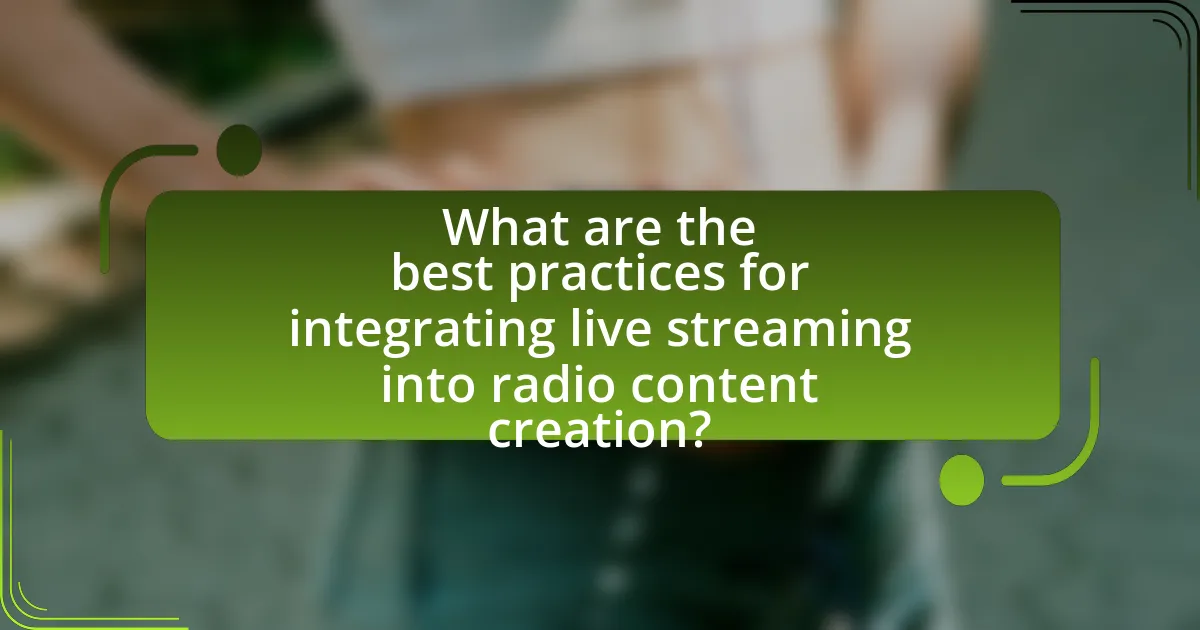
What are the best practices for integrating live streaming into radio content creation?
The best practices for integrating live streaming into radio content creation include ensuring high-quality audio and video, engaging with the audience in real-time, and promoting the live stream across multiple platforms. High-quality audio and video are essential as they enhance the listener’s experience and maintain professionalism; for instance, using professional-grade microphones and cameras can significantly improve production quality. Engaging with the audience in real-time through chat or social media interactions fosters a sense of community and encourages listener participation, which can lead to increased loyalty and audience retention. Promoting the live stream on social media, websites, and through email newsletters ensures that the audience is aware of the event and can participate, thereby maximizing reach and engagement. These practices are supported by industry trends showing that interactive content increases listener engagement and satisfaction.
How can radio stations effectively promote their live streaming content?
Radio stations can effectively promote their live streaming content by utilizing social media platforms to engage with their audience in real-time. This approach allows stations to share live updates, behind-the-scenes content, and interactive posts that encourage listener participation. For instance, a study by the Pew Research Center indicates that 72% of adults use social media, making it a vital channel for reaching potential listeners. Additionally, incorporating targeted advertising and collaborations with influencers can expand the station’s reach, as these strategies leverage existing audiences to attract new listeners.
What platforms are best suited for live streaming radio content?
The best platforms for live streaming radio content include Mixlr, Spreaker, and Radio.co. Mixlr allows users to broadcast live audio easily and interact with listeners through chat features, making it ideal for real-time engagement. Spreaker offers a comprehensive suite for live broadcasting, including monetization options and analytics, which supports content creators in growing their audience. Radio.co provides a robust platform for managing live streams and scheduling content, catering to both amateur and professional broadcasters. These platforms are widely recognized for their user-friendly interfaces and effective tools for reaching audiences, as evidenced by their growing user bases and positive reviews in the broadcasting community.
How can radio creators maintain a consistent brand identity across live streams?
Radio creators can maintain a consistent brand identity across live streams by establishing clear branding guidelines that encompass visual elements, tone of voice, and content themes. These guidelines ensure that every live stream reflects the same logo, color scheme, and messaging style, which reinforces brand recognition. For instance, using the same intro music and catchphrases across all platforms helps listeners associate specific sounds and phrases with the brand. Research indicates that consistent branding can increase audience loyalty by up to 23%, highlighting the importance of uniformity in branding efforts.
What tips can help radio creators optimize their live streaming experience?
To optimize their live streaming experience, radio creators should focus on high-quality audio and reliable internet connectivity. High-quality audio ensures that listeners have a clear and enjoyable experience, which is crucial for retaining audience engagement. Reliable internet connectivity minimizes disruptions during the broadcast, maintaining a seamless flow of content. Additionally, utilizing interactive features such as live chats or social media integration can enhance listener engagement, allowing for real-time feedback and interaction. According to a study by the Pew Research Center, 53% of listeners prefer interactive content, indicating that engagement strategies can significantly impact listener retention and satisfaction.
How can radio stations ensure high-quality audio and video during live streams?
Radio stations can ensure high-quality audio and video during live streams by utilizing professional-grade equipment, optimizing internet bandwidth, and employing skilled technicians. Professional-grade microphones, cameras, and mixers enhance sound and visual clarity, while a stable, high-speed internet connection minimizes buffering and interruptions. Additionally, trained personnel can manage the technical aspects of the stream, ensuring that audio levels are balanced and video quality is maintained. Research indicates that radio stations that invest in quality equipment and training experience significantly improved listener engagement and satisfaction, as high-quality streams attract larger audiences and retain them longer.
What strategies can enhance audience interaction during live streaming sessions?
To enhance audience interaction during live streaming sessions, incorporating real-time polls and Q&A segments is effective. These strategies actively engage viewers by allowing them to participate in the content creation process, fostering a sense of community. Research indicates that live polls can increase viewer engagement by up to 30%, as they encourage immediate feedback and interaction. Additionally, responding to audience comments and questions during the stream can create a more personalized experience, making viewers feel valued and more likely to return for future sessions.

